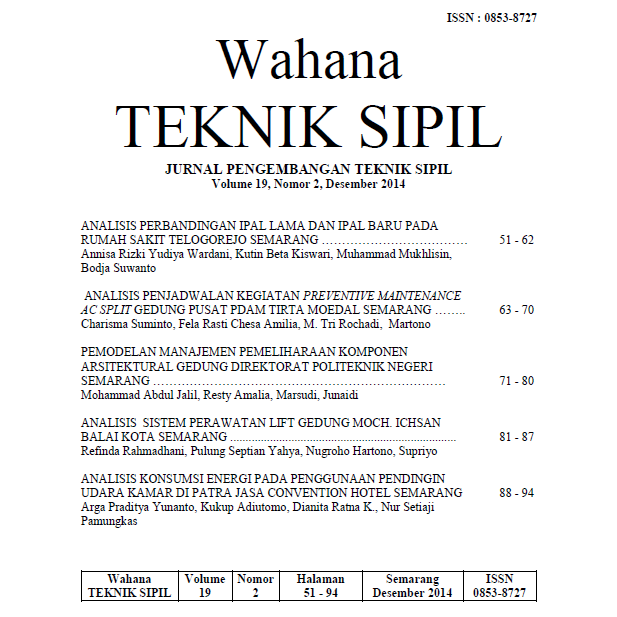Analisis Perbandingan Ipal Lama Dan Ipal Baru Pada Rumah Sakit Telogorejo Semarang
DOI:
https://doi.org/10.32497/wahanats.v19i2.133Keywords:
liquid waste, hospital, sewage treatment plant (IPAL)Abstract
Hospital is a health care institution which becomes educational place of research and health workers. On the other side, hospital often potentially causes environmental pollution due to its liquid waste. It is said in Law no 20 year 1990 that “setiap orang atau badan yang membuang limbah cair wajib mentaati baku mutu limbah cair sebagaimana ditentukan dalm izin pembuangan limbah cair yang ditetapkan baginya”. Therefore, it is necessary to create sewage treatment plant system or STP to manage liquid waste. The system is quite good until encounters overloading. But now, Telogorejo Hospital has upgraded its STP into the newest STP with higher capacity of water treatment. Objectives of this research are to analyze the effectiveness of operational system and procedure of IPAL and also compare the previous IPAL with the newest one on the Telogorejo Hospital. Research method used in this research are interview, observasion, secondary data collecting, and data analyzing. The result shows that the upgrading of the IPAL, from capacity, process and effluent quality, is much more effective.
Downloads
Published
Issue
Section
License
Authors who publish with this journal agree to the following terms:Authors retain copyright and grant the journal right of first publication with the work simultaneously licensed under a Creative Commons Attribution License that allows others to share the work with an acknowledgement of the work's authorship and initial publication in this journal.
Authors are able to enter into separate, additional contractual arrangements for the non-exclusive distribution of the journal's published version of the work (e.g., post it to an institutional repository or publish it in a book), with an acknowledgement of its initial publication in this journal.
Authors are permitted and encouraged to post their work online (e.g., in institutional repositories or on their website) prior to and during the submission process, as it can lead to productive exchanges, as well as earlier and greater citation of published work (See The Effect of Open Access).






